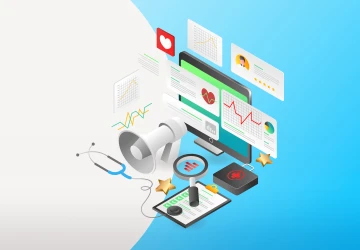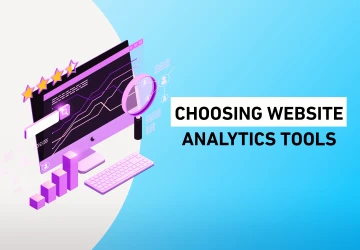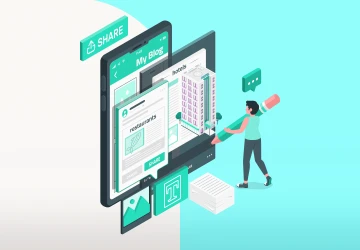Data Security in Medical Websites: Compliance, Challenges, and Solutions
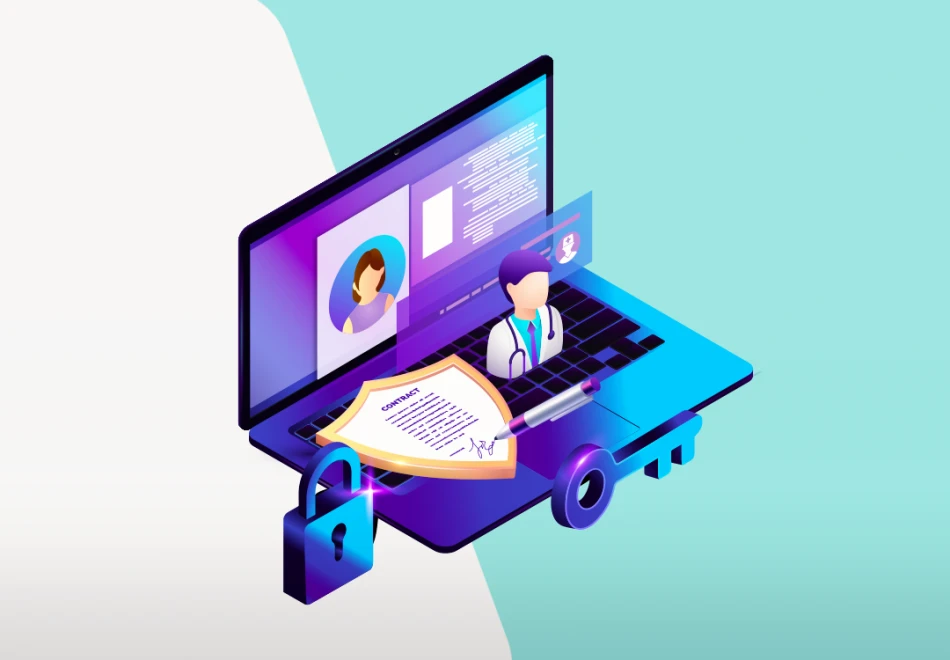
Healthcare data breaches are happening more often, putting patient privacy and sensitive medical records at serious risk.
Cybercriminals are constantly targeting hospitals and HIPAA-compliant websites, looking for weak spots to exploit.
The good news? There are effective ways to safeguard patient data and keep secure websites running smoothly.
In this guide, we’ll break down the best healthcare data security practices to help organizations stay compliant, prevent breaches, and protect sensitive information.
What Is Healthcare Data Security?
Healthcare data security is all about keeping patient information safe.
It protects healthcare providers' data, computers, and networks, ensuring that sensitive patient records don’t fall into the wrong hands or get altered or destroyed.
One of the biggest reasons healthcare security is so important is HIPAA (Health Insurance Portability and Accountability Act).
HIPAA sets the rules for how hospitals, clinics, and other healthcare providers should handle and protect electronic health records (EHRs), medical histories, and other private information.
To stay HIPAA-compliant and protect patient data, healthcare organizations use a mix of security tools and strategies.
This includes encryption, strong access controls, and continuous monitoring to prevent cyber threats and unauthorized access.
Why Is Protecting Healthcare Data Critical?
HIPAA-compliant websites are key for patient data protection because healthcare data is incredibly sensitive and a prime target for hackers.
Without secure websites, private medical information—like electronic health records (EHRs), medical histories, and diagnostic reports—could fall into the wrong hands, leading to serious consequences.
The need for HIPAA-compliant websites has never been greater.
Data breaches in healthcare have skyrocketed, with HIPAA reporting an increase from 277 incidents in 2013 to 725 in 2023.
These breaches don’t just leak confidential records—they can lead to identity theft, financial fraud, and even harm patient care.
On top of that, they can severely damage the reputation of healthcare providers, making it harder for patients to trust them.
And then there’s the cost.
A 2024 report by IBM Security found that healthcare organizations suffer the highest average financial loss from data breaches—$9.77 million per incident—for the 14th year in a row.
That’s an enormous price to pay, highlighting why secure websites are essential for patient data protection.
The good news?
These risks can be minimized.
HIPAA-compliant websites should use strong encryption, strict access controls, and regular risk assessments to keep patient data safe.
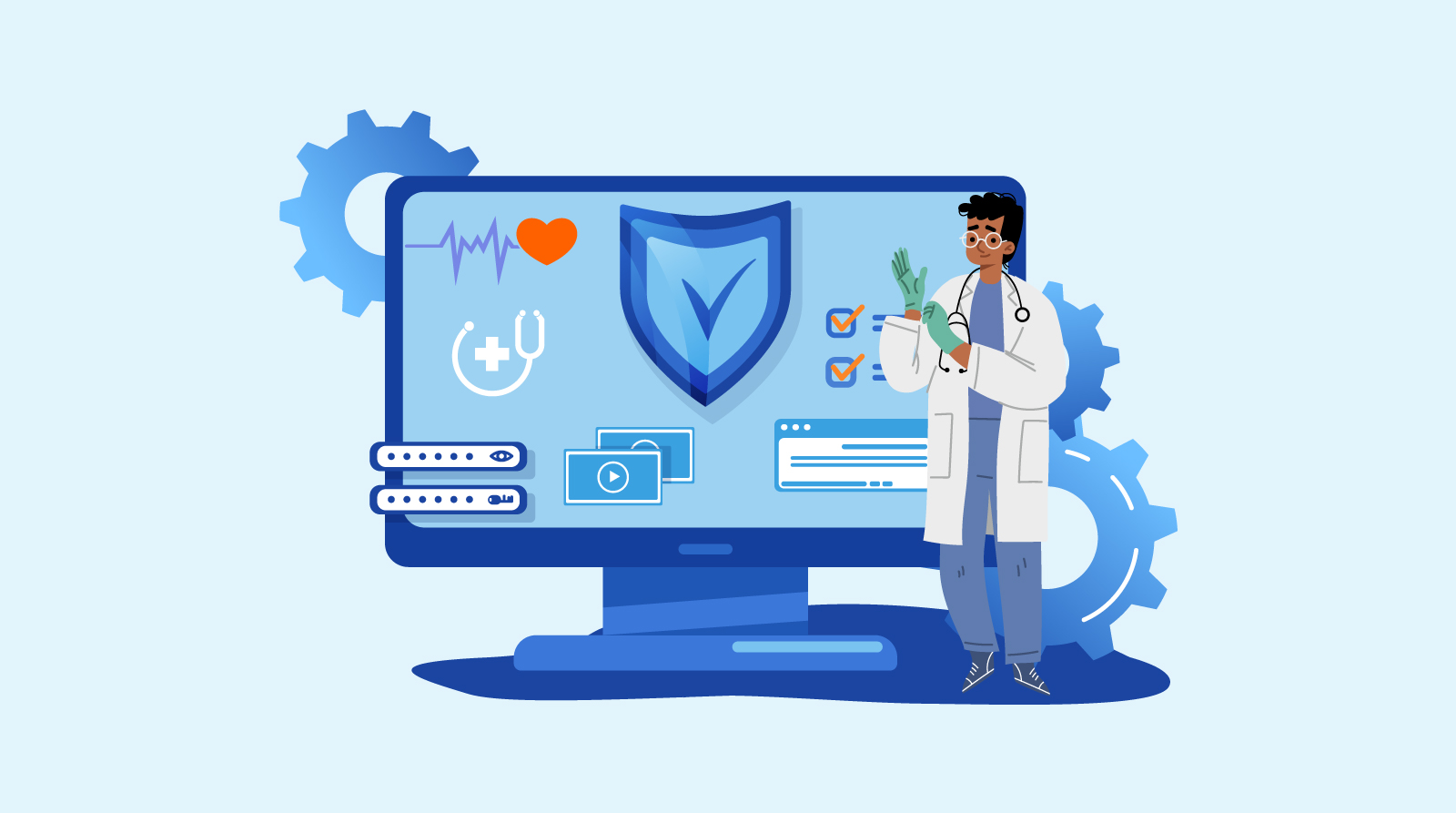
What Are the Regulatory Compliance Requirements for Healthcare Data Security?
HIPAA-compliant websites must follow strict patient data protection laws to ensure that sensitive medical information stays safe.
Around the world, different regulations set the rules for how healthcare organizations handle protected health information (PHI) and personally identifiable information (PII).
These laws help prevent data breaches, protect patient privacy, and avoid severe legal penalties.
Here are some of the key healthcare data security regulations that HIPAA-compliant websites and healthcare organizations must follow:
HIPAA (Health Insurance Portability and Accountability Act) – United States: It must follow three main rules:
Privacy Rule – Ensures that patient data protection is maintained, and PHI is not shared without consent.
Security Rule – Requires encryption, access control, and regular security audits for secure websites handling electronic PHI (ePHI).
Breach Notification Rule – If a data breach occurs, organizations must inform affected individuals and regulatory bodies.
Penalties: Non-compliance can result in fines from $100 to $50,000 per violation, with a maximum annual penalty of $1.5 million.
GDPR (General Data Protection Regulation) – European Union: The GDPR applies to any organization handling the personal data of EU citizens, including healthcare providers. It emphasizes:
Consent – Patients must explicitly agree before their health data is used.
Data Subject Rights – Patients can access, correct, or delete their data.
Breach Notification – Healthcare organizations must report breaches within 72 hours.
Penalties: Fines can reach up to €20 million or 4% of global annual turnover, whichever is higher.
PIPEDA (Personal Information Protection and Electronic Documents Act) – Canada: PIPEDA sets data protection rules for healthcare organizations in Canada, requiring:
Accountability – Organizations must appoint a compliance officer.
Consent – Patient approval is needed before collecting or sharing health data.
Security Measures – Strong encryption and access controls to prevent unauthorized access.
Penalties: Fines for non-compliance can be up to $100,000 per violation.
Some healthcare organizations may also need to comply with additional laws such as:
CCPA (California Consumer Privacy Act) – Protects California residents' healthcare data.
CPPA (Consumer Privacy Protection Act) – Canada's evolving privacy law.
HITECH Act (Health Information Technology for Economic and Clinical Health Act) – Expands HIPAA security rules for electronic health records.
What Are the Biggest Threats to Healthcare Data Security?
1. Outdated or Legacy Systems
Unfortunately, it’s all too common for healthcare organizations to depend on outdated or legacy systems, which puts sensitive patient data at serious risk.
Ideally, everyone would switch to modern, secure websites and tech to stay on top of security standards.
However, the reality is that updating old tech can be expensive, and not all hospitals or clinics can afford these upgrades.
The big issue with these older systems is that they have weaknesses that hackers know about and have exploited before.
When these systems aren't regularly updated or patched, they become low-hanging fruit for cybercriminals who are on the lookout to snatch up electronic health records (EHRs), medical histories, and other private patient details.
2. Health Data Exchanges
Sometimes doctors or insurance companies need to share patient information, like medical histories, billing details, or treatment plans.
This process, called health data exchange, helps healthcare providers, patients, and insurers stay connected and work together smoothly.
The tricky part?
Making sure this information stays safe while it's being sent back and forth.
If the right security measures aren’t in place, patient data protection could be at risk.
Hackers are always looking for weak spots, and if they manage to intercept these transmissions, they could gain access to private medical records or financial details.
3. Complex Healthcare IT Infrastructure
The healthcare IT ecosystem is made up of many interconnected systems, like electronic health records (EHRs), Internet of Medical Things (IoMT) devices, and telemedicine platforms.
These technologies help doctors and healthcare providers deliver better care, but they also store and process a huge amount of sensitive patient data.
That’s why keeping them secure is so important.
The problem is that when all these systems are linked together, a single weak spot can put the entire network at risk.
If just one device or platform gets hacked, cybercriminals could gain access to patient records, and medical devices, or even take control of entire hospital systems.
That kind of breach could be devastating.
To make things even trickier, many of these systems operate across multiple hospitals, clinics, or even different countries.
With so many connection points, it’s nearly impossible to monitor and secure every single one.
Hackers are always looking for vulnerabilities in HIPAA-compliant websites, outdated software, or poorly protected IoMT devices to break in and steal valuable patient information.
That’s why strong security measures are a must.
4. Insider Threats
Sometimes, the biggest threat to patient data protection comes from inside the organization.
Insider threats account for 43% of healthcare data breaches, and nearly half of these cases are intentional.
Some employees or contractors might steal sensitive data for personal gain, selling patient records on the dark web.
Others—such as disgruntled employees—might try to harm the organization by exposing or misusing confidential information.
Even when there’s no malicious intent, careless mistakes—like losing a work device or falling for phishing scams—can still put HIPAA-compliant websites and patient data at risk.
The challenge is that hospitals and healthcare organizations work with a wide range of people, from employees and contractors to third-party vendors.
If any of them have access to the system, a single compromised device—whether through malware or poor security practices—can open the door for cybercriminals.
5. Email-Based Malware Threats
Hackers often find their way into healthcare systems through email-based malware attacks because hospitals and medical organizations have so many employees.
All it takes is one person clicking on a malicious link or downloading an infected file, and the entire system could be at risk.
Attackers count on human error, hoping someone will unknowingly let them in.
Once the malware gets into one computer, it can spread fast, infecting the entire network.
This could give hackers access to patient records, financial data, and even critical hospital systems.
In the worst cases, hospitals may face ransomware attacks, where they’re locked out of their own systems unless they pay hackers to regain access.
These attacks can shut down operations, delay patient care, and result in major data breaches.
6. Insecure Wireless Networks
Hospitals and clinics often offer free Wi-Fi to patients and visitors, allowing them to stay connected while they wait.
While this is a convenient service, it comes with serious security risks.
Many of these networks lack strong protections, making them easy targets for hackers.
Once inside an unsecured network, cybercriminals can do more than just snoop on internet activity—they can steal sensitive patient data, intercept communications, or even break into hospital systems.
This kind of access could put medical records at risk, disrupt critical devices, or open the door to ransomware attacks.
7. Weak Password Management
In many healthcare facilities, employees often reuse passwords or create weak ones that are easy to remember.
While this might seem harmless, it makes things much easier for hackers.
If an attacker gets hold of a password that an employee also uses on other accounts, they can easily break into the system and gain unauthorized access.
Once inside, cybercriminals can move through the network, stealing patient records, disrupting medical devices, or even locking down critical systems with ransomware.
A single weak password could be all it takes for a major security breach.
8. Insufficient Security Training
With hundreds or even thousands of employees, healthcare organizations face a major challenge: ensuring everyone understands and follows proper data security practices.
Not only is it difficult to train such a large workforce, but high employee turnover makes it even harder to ensure that new staff members receive the necessary cybersecurity education.
Without proper training, employees may fall for phishing scams, use weak passwords, or unknowingly expose sensitive patient data.
A single mistake—like clicking on a malicious email link—can open the door for hackers to steal information, disrupt medical systems, or launch ransomware attacks.
9. Rise of Cloud and Mobile Technology
Cloud and mobile technology make it incredibly easy for healthcare providers to access and manage patient data from anywhere.
Doctors can quickly pull up medical records on their phones, and hospitals can store huge amounts of patient information in the cloud, rather than relying on local servers.
While this is convenient and boosts efficiency, it also brings serious security challenges.
The biggest worry?
Unauthorized access.
If a hacker gets hold of a doctor’s password or mobile device, they could gain entry to a massive amount of sensitive medical data, like patient histories, billing information, and even real-time treatment plans.
Unlike traditional in-house servers with limited access points, cloud-based and mobile platforms can be reached from multiple devices, making them easier to attack.
What Are the Best Practices for Strengthening Healthcare Data Security?
1. Strengthen and Update Security Policies
HIPAA-compliant websites need strong security policies to ensure patient data protection and maintain secure websites.
These policies act as a blueprint for keeping sensitive medical information safe and preventing data breaches.
Without clear guidelines, healthcare organizations risk exposing patient records to cyber threats.
To keep HIPAA-compliant websites secure, organizations should develop detailed security policies that cover:
How data should be handled—Clearly define how sensitive information is stored, accessed, and shared across secure websites.
Who is responsible for security—Ensure specific team members are accountable for patient data protection and system security.
How data is managed—Set strict rules for encrypting, storing, and securely deleting patient data to prevent unauthorized access.
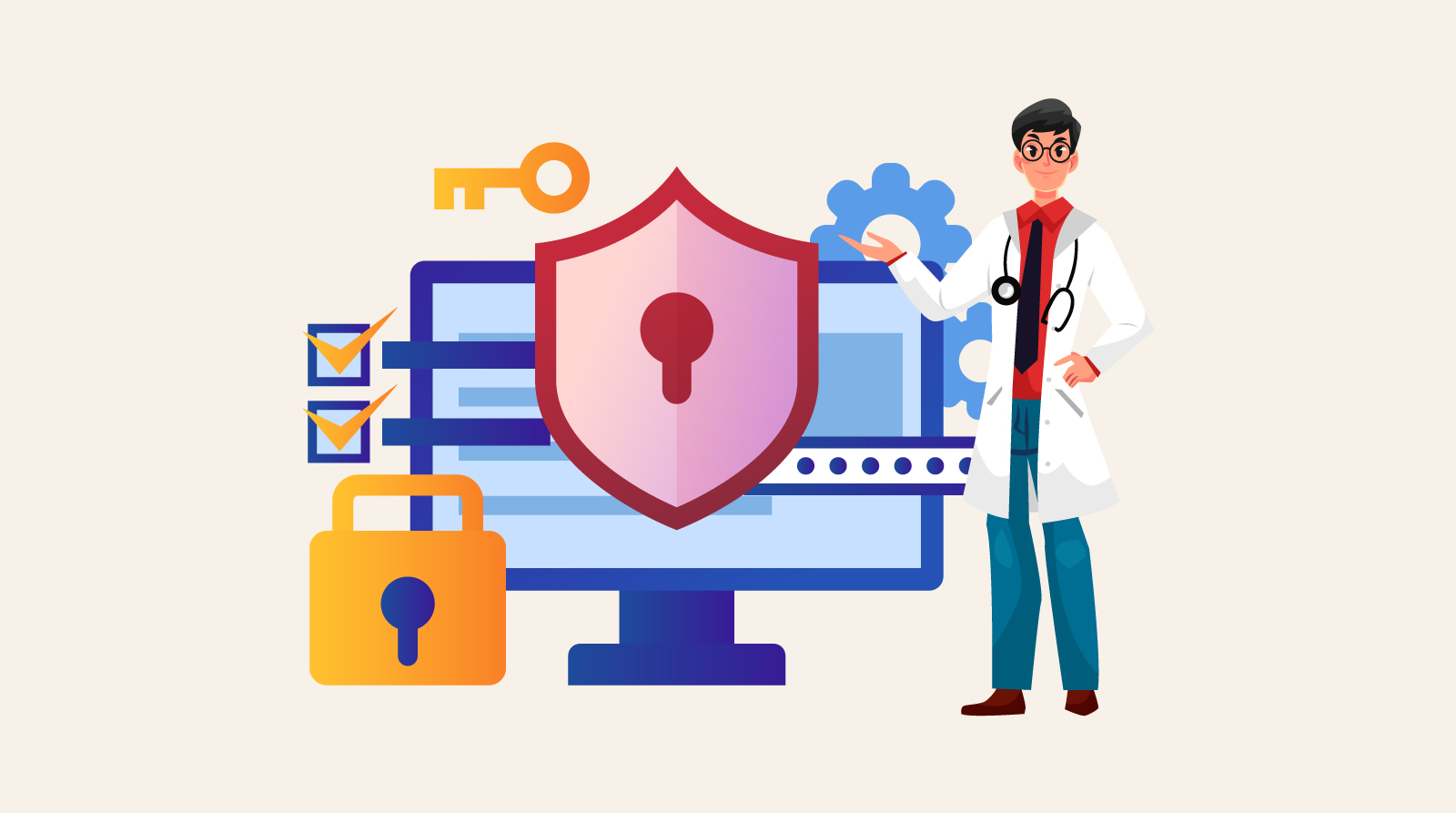
2. Implement Strict Access Controls
HIPAA-compliant websites should follow a zero-trust security approach, meaning no one is trusted by default—every user must be verified before accessing sensitive data.
This helps minimize unauthorized access and data exposure.
To strengthen patient data protection, healthcare organizations should:
Follow the principle of least privilege—Grant employees access only to the information they need to do their job. This limits unnecessary exposure of sensitive patient records.
Enforce multi-factor authentication (MFA)—Require additional verification, such as a code sent to a phone or email, before granting access. Even if hackers steal login credentials, MFA makes it much harder for them to break in.
3. Continuously Train Employees
As we talked about earlier, human error is often the weakest link in healthcare cybersecurity.
Even with strong security systems in place, HIPAA-compliant websites can still be at risk if employees aren’t properly trained.
All it takes is one simple mistake—clicking on a phishing email, using a weak password, or mishandling sensitive patient data—for cybercriminals to gain access and put patient data protection in jeopardy.
To reduce these risks, healthcare organizations should:
Offer regular cybersecurity training—Employees need to know how to recognize phishing scams, keep their devices secure, and handle patient data safely. The more they understand the risks, the better they can protect secure websites from cyber threats.
Run phishing simulations—Testing employees with fake phishing emails helps identify those who might fall for scams. This allows organizations to provide extra training where needed and build a strong security culture.
4. Encrypt Data and Maintain Backups
Your data is like a vault of patient information, holding everything from personal details to critical medical records.
If that vault isn’t encrypted or properly backed up, it’s only a matter of time before cybercriminals try to break in.
That’s why HIPAA-compliant websites need to make data encryption and routine backups a priority.
Encryption works by turning sensitive data into code that only authorized users can unlock.
This means even if hackers intercept the data, they can’t read it without the decryption key.
While encryption keeps your data safe from prying eyes, frequent backups protect against accidental loss and ensure you can recover important records after a cyberattack or system failure.
To keep your vault secure, healthcare organizations should:
Encrypt all stored and transmitted data—Use industry-standard algorithms to lock down every piece of patient information.
Schedule regular backups—Save data often to minimize losses, whether from ransomware or server crashes.
Store backups securely—Keep copies off-site or in a secure cloud to prevent physical damage or theft from affecting the data.
5. Track and Analyze User Activity
You can’t truly know if your HIPAA-compliant website is secure unless you’re tracking and analyzing user activity.
It’s not just about locking down patient data—it’s about keeping an eye on who is accessing it, when, and why to catch potential threats before they cause damage.
Say someone logs in at odd hours, downloads large amounts of patient records, or accesses data from an unfamiliar location.
These could all be signs of unauthorized access or an attempted security breach.
Without a system to track and flag these activities, patient data protection becomes much harder to manage.
To stay ahead of cyber threats, healthcare organizations should:
Monitor data access at all times—Use advanced tracking tools to log every interaction with sensitive patient records.
Spot suspicious behavior in real-time—Set up alerts for failed login attempts, unexpected data transfers, or access from unknown devices.
Keep detailed logs—Maintain records of user activity for audits and investigations to stay compliant with HIPAA standards.
6. Mitigate Third-Party Security Risks
It’s often the things you don’t see coming that put your HIPAA-compliant website at risk.
Even if your security measures are rock solid, a third-party vendor—like a cloud provider, billing service, or IT contractor—could be the weak link that ends up exposing patient data.
If they don’t have strong security, it can lead to a data breach, handing sensitive information to the wrong people.
Worse still, your organization might face HIPAA violations and big fines for failing to ensure proper patient data protection, even if you weren’t directly at fault.
To avoid these pitfalls, healthcare organizations should carefully screen and monitor their vendors before sharing any sensitive data.
Every third party needs to follow HIPAA security standards, use strong encryption, and maintain tight access controls.
Even the most secure website can become vulnerable if a vendor’s security is weak.
Regular security audits also go a long way toward staying safe.
Healthcare providers should regularly check vendor security certifications, evaluate their data protection measures, and ensure they meet the latest industry standards.
If a vendor isn’t keeping up, you need to push for improvements or switch to a more secure alternative.
7. Keep Systems and Software Updated
Just like you deal with your home by locking doors and fixing leaky windows, you need to regularly update and patch your systems to protect your HIPAA-compliant website from cyber threats.
Attackers are constantly scanning for outdated software and older medical devices because these have known vulnerabilities that they can exploit.
If your systems aren’t up to date, you’re effectively leaving a window open for hackers to slip in and steal sensitive patient data.
Updates don’t just bring new features—they often include critical security fixes that plug holes in your defenses.
By staying on top of patches and upgrades, you help maintain secure websites, reduce the chance of breaches, and keep your network safe from new strains of malware.
8. Run Frequent Risk Assessments
Think about how building inspectors regularly check a place for fire safety, identifying hazards, and making sure everything meets the proper standards.
HIPAA-compliant websites need the same kind of routine risk assessments to catch security gaps before hackers can take advantage of them.
Without these frequent checkups, patient data protection becomes much harder, and sensitive information could be exposed.
A risk assessment works like a security inspection, pointing out weak spots in your defenses and showing you where to improve.
It provides a clear roadmap for strengthening secure websites and staying ahead of cyber threats.
But risk assessments aren’t the only tool you need.
Penetration testing is also crucial.
This is where you simulate real-world cyberattacks to see how your security measures hold up.
If you find any vulnerabilities, you can fix them before an actual attacker has the chance to exploit them.
9. Prepare a Detailed Incident Response Plan
No matter how strong your security is, breaches can still happen.
That’s why every HIPAA-compliant website needs a clear, well-structured incident response plan (IRP) to handle emergencies smoothly.
When a security breach occurs, having a plan means you know exactly what steps to take instead of scrambling to contain the situation.
Think of it like a fire drill—the more prepared you are, the better you can respond in a crisis.
A solid incident response plan should lay out clear steps for detecting, containing, fixing, and recovering from a data breach.
It should also define who is responsible for what, so there’s no confusion when time is of the essence.
Communication is another key part of the plan.
If a breach happens, healthcare organizations must notify affected individuals and regulatory authorities (such as HIPAA or GDPR) within the required timeframe.
Being upfront and transparent not only helps maintain patient trust but also keeps your organization compliant with patient data protection laws.
10. Use Specialized Cybersecurity Tools
Cyber threats keep changing, and HIPAA-compliant websites need specialized cybersecurity tools to stay one step ahead of attackers.
It’s not enough to rely on standard security measures; healthcare organizations should invest in advanced security software to protect patient data and maintain secure websites.
With robust cybersecurity solutions, you can automate many security tasks.
This makes it easier to monitor user activity, manage access to sensitive data, and spot potential threats in real-time.
Instead of relying on people to catch every issue, these tools send immediate alerts when something suspicious happens, like unauthorized logins or attempts to view electronic health records (EHRs).
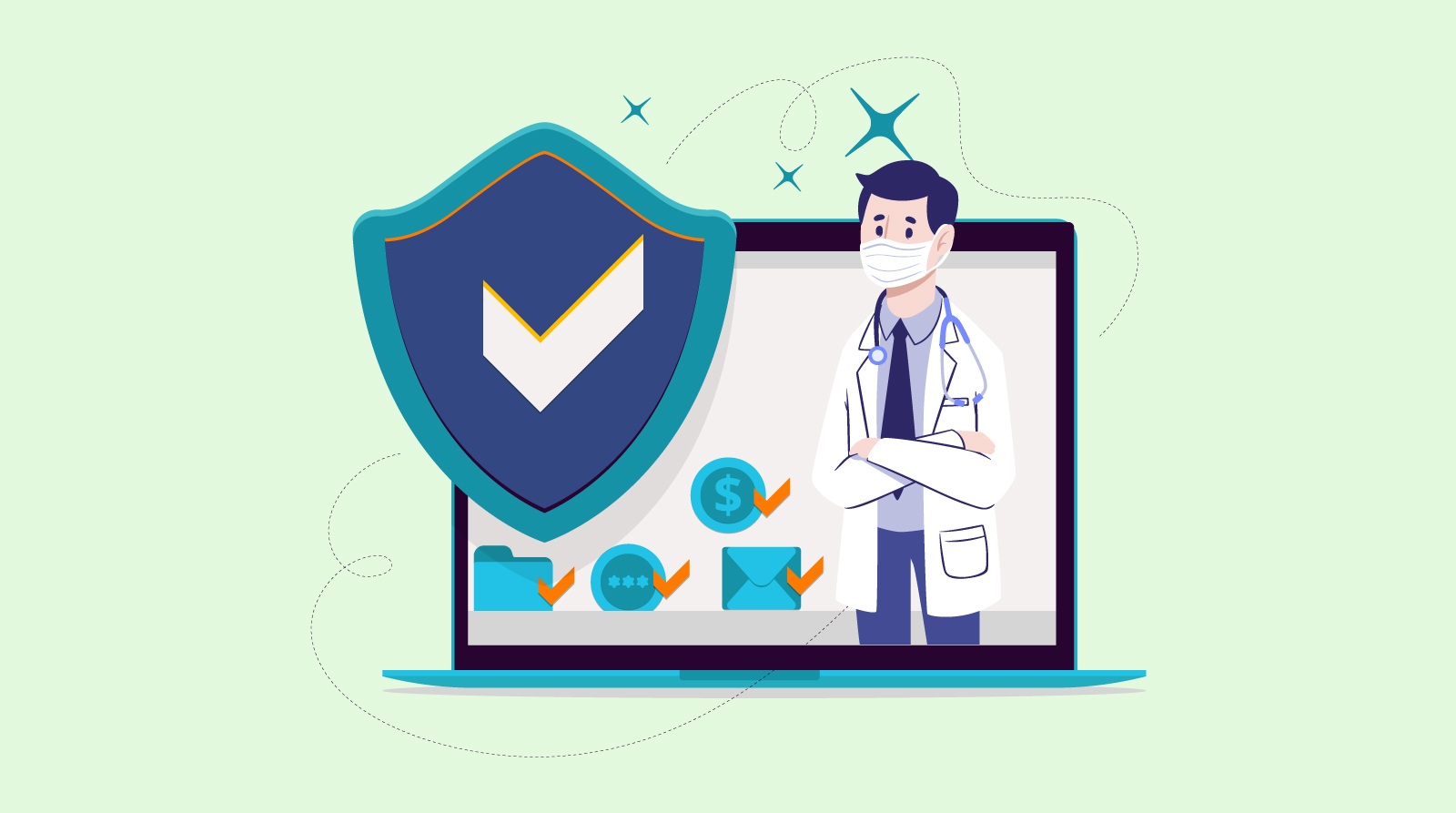
11. Enforce Confidentiality Agreements
Your patient’s data should be handled with the same care as their medical treatment.
No matter how advanced your HIPAA-compliant website’s security is, it won’t be effective if the people accessing the data don’t follow proper guidelines.
That’s why confidentiality agreements are so important—they ensure that everyone handling patient data understands their role in keeping it safe.
These agreements spell out what information can and cannot be shared, making sure that employees, contractors, and vendors take responsibility for patient data protection.
This isn’t just about following the rules—it helps prevent both accidental and intentional data leaks.
Studies show that about 50% of healthcare organizations have experienced internal data breaches caused by employees.
12. Ensure Secure Printing
Even in today’s digital world, printed documents can still be a security risk.
While HIPAA-compliant websites and secure websites help protect patient data online, once something is printed, it’s much harder to control who sees it or where it ends up.
Unlike digital files, paper documents can be lost, copied, or shared without proper safeguards, increasing the risk of unauthorized access or misuse.
The problem is bigger than most people realize.
61% of IT decision-makers say they’ve experienced data loss due to unsecured printers, proving that printing remains a weak spot in patient data protection.
To reduce these risks, healthcare organizations should use secure printing solutions that require user authentication before a document is printed.
This way, only authorized staff can access sensitive records.
It’s also important to have clear rules for storing and disposing of printed documents, like keeping them in locked storage or shredding them when they’re no longer needed.
13. Control Mobile Device Usage
Mobile devices have become a huge part of healthcare, making it easier than ever to access patient data on the go.
The shift to cloud computing, SaaS applications, and remote work, especially after the COVID-19 pandemic, has only increased reliance on smartphones and tablets.
And this trend isn’t stopping anytime soon—by 2029, global smartphone usage is expected to reach 6.1 billion users.
While this level of accessibility is great for convenience, it also creates serious security challenges for HIPAA-compliant websites and healthcare organizations.
To keep patient data protection a priority, healthcare providers need to use Mobile Device Management (MDM) solutions.
These systems help secure mobile devices by enforcing strong encryption, remote data wiping, and restrictions on installing unauthorized apps.
Without these protections, lost or stolen devices could become easy targets for hackers looking to steal sensitive patient information.
But technology alone isn’t enough—training staff on safe mobile device usage is just as important.
Employees need to understand how to securely access patient data and follow best practices when using mobile devices in clinical settings.
14. Enforce Robust Passwords and Authentication
A strong password is a good start, but it’s no longer enough to keep HIPAA-compliant websites secure.
Hackers are getting better at guessing or stealing passwords, which is why multifactor authentication (MFA) is a must for patient data protection.
MFA adds an extra security step, ensuring that even if someone gets hold of a password, they still can’t get in without further verification.
Instead of just entering a username and password, MFA requires another form of identification, like:
Answering a security question that only the user knows.
Using a physical device, like a key fob or an authentication app, generates a one-time code.
Scanning a fingerprint or face, using biometric authentication.
FAQs
What Is the Security of Healthcare Data?
Healthcare data security protects patient information from unauthorized access, breaches, and cyber threats using encryption, authentication, and strict access controls.
What Are the 4 Elements of Data Security?
The four key elements are Confidentiality (restricting access), Integrity (ensuring accuracy), Authenticity (verifying identities), and Availability (keeping data accessible when needed).
What Are 5 Ways to Secure Data?
Use strong encryption, enable multifactor authentication (MFA), apply strict access controls, perform regular security audits, and implement secure backup solutions.
What Are Some Examples of Data Security?
Examples include encrypted electronic health records (EHRs), firewalls, MFA for login access, secure cloud storage, and role-based access restrictions in healthcare systems.
Final Thoughts
We’ve covered the key steps to keeping healthcare data safe, from strong encryption to advanced cybersecurity tools.
But security isn’t just about having the right technology; it’s also about staying proactive.
Running regular risk assessments and training employees is just as important as firewalls and encryption.
Here’s something to keep in mind: true security comes from the right mix of technology, smart policies, and well-trained people.
They all work together to create a strong defense.
If you need help securing your healthcare data, don’t hesitate to reach out—let’s build a safer, more secure system together.

